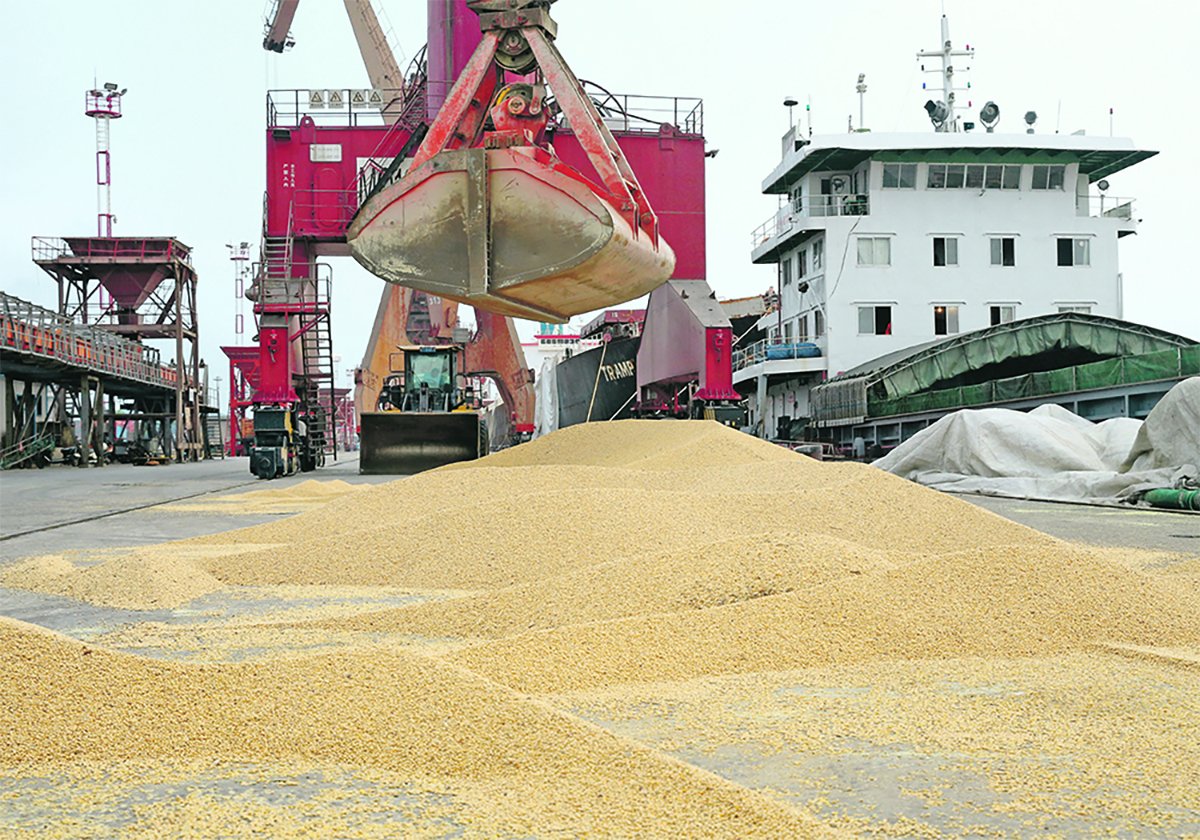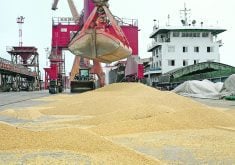I’ve seen social media posts saying Western canola growers are being sacrificed to save the nascent Ontario electric vehicle industry, but there are more compelling explanations for the recent price decline that have nothing to do with regional grievances.
China’s 100 per cent tariff on canola meal is a weight on canola seed prices, but if you look at the wider oilseed complex, soybean oil, which canola closely follows, was falling almost as much as canola seed from late February to mid March.
And looking back over the crop year so far, I wonder if China made the market dance to its tune, first using threats of a dumping investigation to weaken canola’s price and then snapping up a record amount of canola seed relatively cheaply.
Read Also

U.S. soy subsidies will cause lasting damage to industry
Nothing illustrates the demise of world trade agreements more than the recent dispute between the United States and China.
Let’s probe more deeply into these observation.
In September China announced an anti-dumping investigation into canola, casting a dark shadow over the market, weighing down the price.
The Chinese didn’t specifically link the investigation to Canada’s tariffs of 100 per cent on electric vehicles and 25 per cent on steel and aluminum, but most believe that is the reason.
The tariffs were launched in step with our supposed friends in the United States to protect the massive investments governments and industry made to kick start the North American EV supply chain to prevent the auto industry being over run by inexpensive Chinese product. Ottawa and Washington allege the Chinese EV industry was unfairly subsidized by Beijing.
The tariffs were done in concert with the U.S. to ensure that Canada did not become a “back door” to Chinese vehicles that would be re-exported to the U.S.
The European Union also imposed tariffs on Chinese EVs but in a more nuanced fashion, using a lower rate and tailoring the tariff to each Chinese car maker.
As stated, the Chinese responded to Canada’s EV tariff by threatening canola with an anti-dumping investigation, which weakened the price. They then turned around and imported seed at a record speed.
From August to the end of February, China imported 3.36 million tonnes of seed from Canada. That is 20 per cent more than the previous record for that point in the year, 2.84 million set in 2022-23.
Indeed, canola exports to all destinations have been booming through the crop year, and the domestic crush pace has been aggressive.
That positive news finally began to overpower the worry about the China investigation and canola’s price rallied.
It was supported by tightness in the global vegetable oil supply, particularly of palm oil.
Palm oil by the end of 2024 rallied to a 29-month high, putting it in the rare position of being more expensive than soy oil.
U.S. soy oil exports boomed. In the December U.S. Department of Agriculture monthly supply and demand report the forecast for the year’s soy oil exports jumped 46 per cent from the month before.
The rally in the canola and soy markets was interrupted immediately after Donald Trump’s election in November on uncertainty about what he might do.
But the strong demand again became top of the market’s mind and prices rallied until about Feb. 20 before falling sharply into mid-March.
The Feb. 20 to March 14 decline was about 17.5 per cent for canola, but soy oil was not far behind, falling 15.5 per cent.
In that period China announced the 100 per cent tariff on canola meal and oil, It also increased tariffs on U.S. soybeans.
Meanwhile, the U.S. biofuel market, the big user of soy and canola oil, was in disarray. Nervous producers cut back output in January.
The Biden administration had changed the subsidy system for biofuel but details were not worked out about how various feedstocks for biomass-based diesel would be treated.
Also, it was not clear whether the new Trump administration was interested in supporting biofuel at all.
Last week, the Trump administration appeared to step back from taking action itself on biofuels and asked the oil and biofuel industries to negotiate a biofuel policy they both could support.
Another factor in the oilseed market in the last few weeks is the annual start of Brazil’s export season, when its product starts to displace U.S. soybeans on the international market.
Brazil is harvesting a record large soybean crop. The risk premium in the market to account for the potential of bad weather limiting South American yield is deflating as the harvest progresses.
And by the time you read this, we will know what new chaos has been created by Trump’s April 2 tariff announcements.
The bottom line is there are many factors affecting canola’s price.
The Chinese tariff is a negative and it would be good to see whoever wins the federal election make better recognition of the problem.
However, the tariff was just one factor in the market that was under downward pressure anyway from a host of vexing issues, many of which will require government attention.















